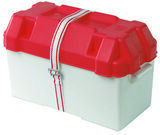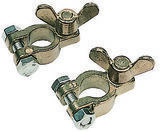| Main Category: Electric Trolling Motors |
| Producer: Minn Kota |
| Supplier: Pro Marine Trade |
| Unit: pcs |
| Product Description: |
Minn Kota Endura 50 C2 is created especially for small to medium sized (max.1050 kg) freshwater boats. Power: 12 V. Telescopic handle, lever lock bracket. Shaft length: 91.5 cm. Super quiet operations. We recommend to use high quality deep cycle marine battery (130 Ah).
|
|
|
| Delivery to our warehouse: 10 days |
| Product Code | Photo | Title | Price | Quantity | |
|---|---|---|---|---|---|
| MK1352270M |  |
ELECTRICAL MOTOR- MINN KOTA ENDURA 30 C2, 12 V
Availability: Delivery to our warehouse: 3 days
|
210.00 € | ||
| MK1352271M |  |
ELECTRICAL MOTOR- MINN KOTA ENDURA 34 C2, 12 V
Availability: Delivery to our warehouse: 3 days
|
230.00 € | ||
| MK1352272M |  |
ELECTRICAL MOTOR- MINN KOTA ENDURA 40 C2, 12 V
Availability: PRODUCT IS IN STOCK
|
319.99 € | ||
| MK1352273M |  |
ELECTRICAL MOTOR- MINN KOTA ENDURA 45 C2, 12 V
Availability: Delivery to our warehouse: 3 days
|
370.00 € | ||
| MK1352275M |  |
ELECTRICAL MOTOR- MINN KOTA ENDURA 55 C2, 12 V
Availability: Delivery to our warehouse: 3 days
|
399.99 € |
See also |
||
Products
BATTERY CHARGER- MINN KOTA-220E, 2 x 10 A
MK1822203
Price: 395.00 €

BATTERY BOX, 330 x 185 x 260 mm
14.546.01
Price: 23.43 €

CLAMP SET FOR BATTERIES, BRONZE
14.386.00
Price: 19.68 €
|
| « Continue shopping |